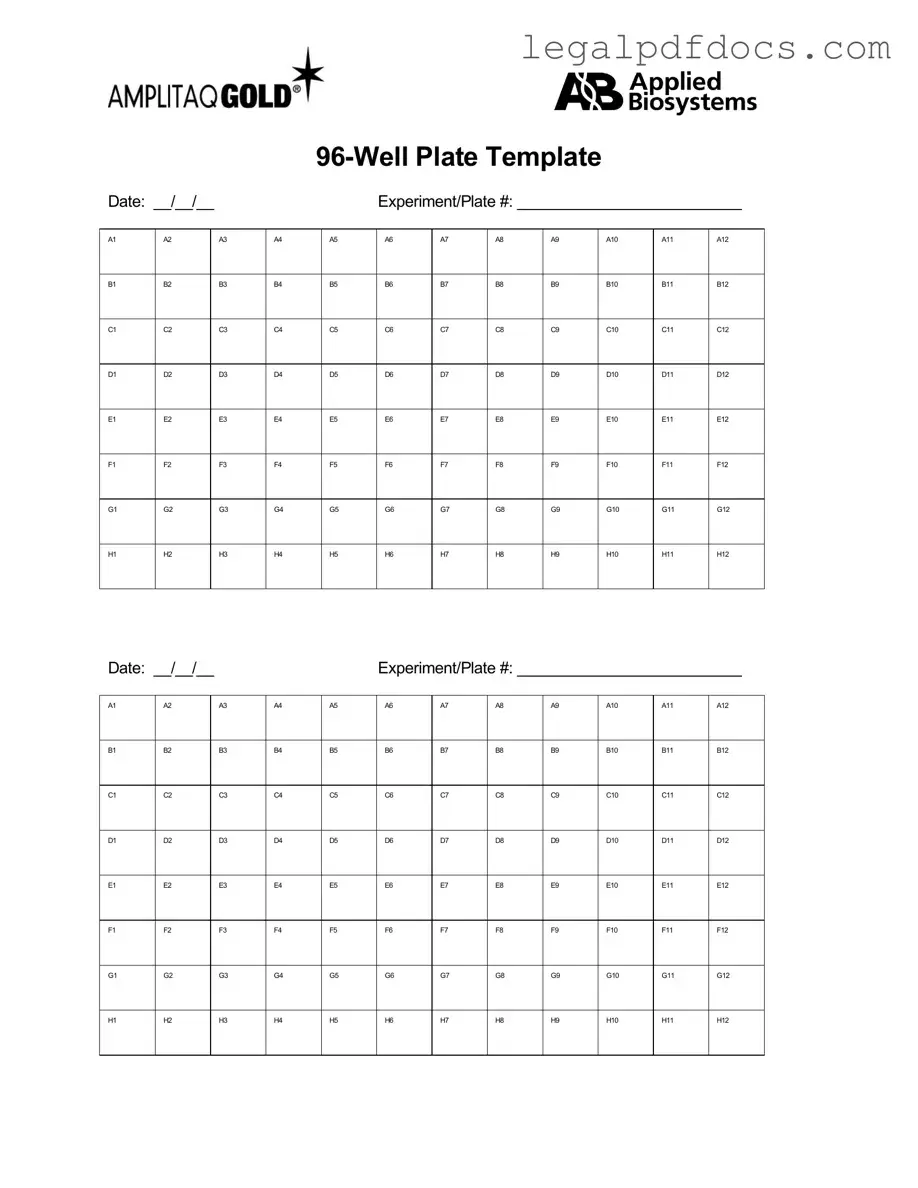Fill Out a Valid 96 Well Template
The 96 Well form is a standardized document used primarily in laboratory settings to organize and record data related to experiments conducted in a 96-well plate format. This form helps researchers keep track of samples, reagents, and results, ensuring that experiments are both efficient and reproducible. To streamline your research process, consider filling out the 96 Well form by clicking the button below.
Open 96 Well Editor Here
